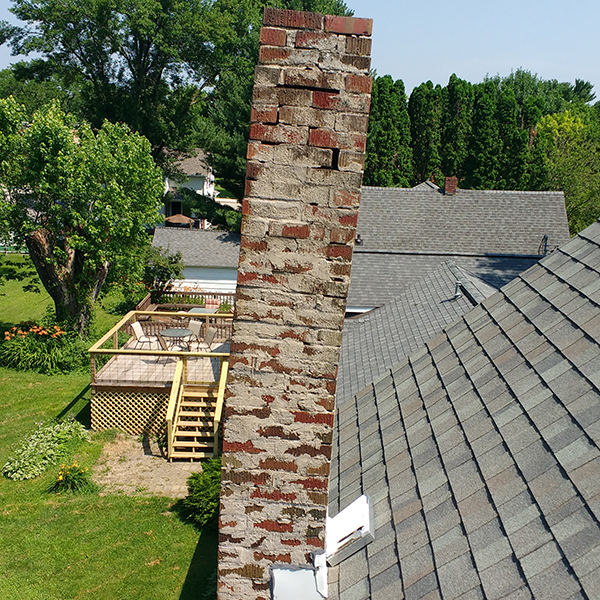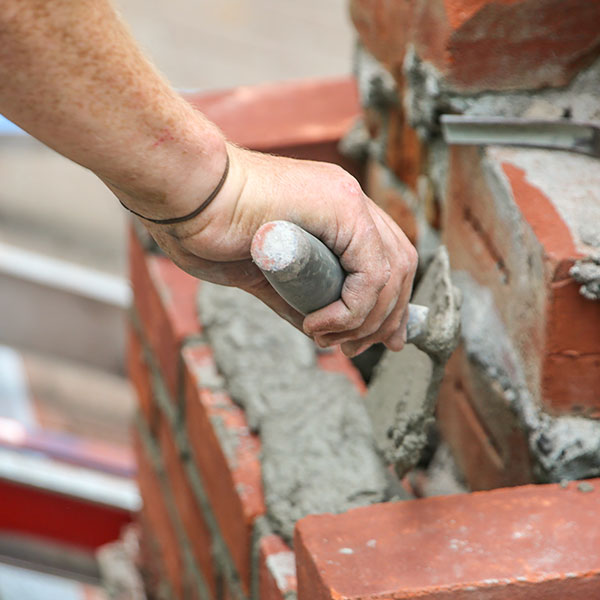What’s Causing My Chimney To Lean?
 It’s safe to say that outside of Italy’s famous leaning tower, vertical structures should remain, well, vertical, and that includes your chimney. Chimney tilting happens gradually, and unfortunately for many homeowners, by the time they notice it, the structure is significantly damaged, and you must act quickly to prevent a household catastrophe. This blog post looks at what causes chimney tilt, what risks it presents, and how you can fix it.
It’s safe to say that outside of Italy’s famous leaning tower, vertical structures should remain, well, vertical, and that includes your chimney. Chimney tilting happens gradually, and unfortunately for many homeowners, by the time they notice it, the structure is significantly damaged, and you must act quickly to prevent a household catastrophe. This blog post looks at what causes chimney tilt, what risks it presents, and how you can fix it.
Every chimney is different, and tilting happens for various reasons; however, some causes are more common than others.
- Flawed Construction
Every building depends on a solid foundation for stability against time and the elements. A typical chimney can weigh thousands of pounds, which means you need a strong concrete and rebar foundation to support that weight. Most times, we find shoddy foundation construction to cause chimneys to tilt. Strong chimney foundations are susceptible to the weather, particularly the annual freeze-thaw cycle, even in the best circumstances. Because brick and concrete are porous, they absorb water like a sponge. Once water gets in and freezes, it expands, causing cracks and weakening the structure. This damage happens more quickly in a weak or flawed foundation and causes a chain reaction that can send your chimney crashing down. - Sulfur Damage
Sulfur damage often results from venting gas from oil-based appliances. The oil in the sulfur mixes with water, and when it condenses, it creates sulfuric acid. Sulfuric acid erodes the chimney’s mortar, making it susceptible to water absorption. Sulfur damage is typical in chimneys that don’t have a flue liner, which creates a protective barrier between the sulfur’s byproducts and the brick and mortar. - Ineffective Drainage
Poor water drainage will destroy even the strongest chimney. As we mentioned, concrete, brick, and mortar are porous. So, when water settles around the foundation, it seeps into the structure, leading to tiny cracks that get worse every season. Once weakened, the foundation can’t support the chimney’s weight, leading to the chimney tilting.
Getting back to that famous leaning tower in Italy, it’s easy to think that a leaning chimney isn’t so bad. After all, the tower has stood for over 800 years, right? Wrong!
Dangers of ignoring a tilting chimney
- Chimney Collapse
The worst problem that can happen if your chimney tilts is the foundation gives way, and the chimney collapses. Imagine the destruction a few thousand pounds of bricks and mortar can do to your home. - Pest Infestation
As your chimney tilts, it separates from the house, creating an accessible entrance for pests like mice and other rodents. - Gas Leaks
If your chimney tilts, it can cause the flue liner to crack. A cracked liner exposes the home to the combustible gasses produced by your fire. Hot gas leaks cause the chimney’s structure to break down more quickly and put your family at risk of a chimney fire. - Water Damage
Besides pests getting into your house as your chimney pulls away from the siding, it creates a gap for water to get in. Once water gets into your home, it can cause structural damage and create a breeding ground for mold and mildew.
How Can I Tell If My Chimney is in Danger of Leaning?
- As mentioned, once chimney tilt becomes apparent, it’s usually too late. However, there are signs that your chimney is leaning, allowing you to call a professional chimney repair service to fix it before it reaches the point of no return.
- Inspect the Joint Between the House & Chimney
Check the joint between your house and the chimney for gaps. A gap that’s opened up typically means your chimney is tilting. - Check the Interior
If your chimney runs through the inside of your house, check the attic and see if it’s centered in the opening. If you see it pushing against one side, it usually means the chimney is leaning. - Leaks
Another sign that your chimney might be leaning is if it develops leaks. When the chimney leans, it can damage the flashing, allowing water to get in. Sometimes, people look at their chimney and think it’s leaning because of an optical illusion; however, it’s always best to be safe than sorry and call a professional chimney repair service to be sure.
What to Do If Your Chimney is Tilting?
If you suspect your chimney is leaning, you must contact a certified chimney specialist as soon as possible. Don’t try a DIY repair with caulk or other fillers because these materials aren’t strong enough to shore up your chimney, and the damage will only worsen. If, after inspection, the contractor determines your chimney is leaning, there are several steps they can take to fix it.

One method to fix a tilting chimney is with a spot repair, which involves deconstructing and reconstructing the affected portion of the chimney to return stability. Another method involves repairing the foundation or installing metal piers or anchors to bring it back in line.
Above & Beyond Chimney Service is a family-owned and operated company serving homeowners throughout Southern Massachusetts for over two decades. We offer a comprehensive list of chimney maintenance and repair services and are and are fully licensed and insured.
If you live in South Framingham or the South Shore and need a certified chimney specialist you can count on, contact us by phone at 781-383-0415 or online
